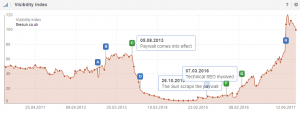A remote work environment offers employees some enviable advantages, including a better work-life balance, the elimination of stressful commutes, and, in some cases, the flexibility to work whenever they’re most productive. Unfortunately, remote work culture has one major downside: According to a survey by Slack of 4,700 remote workers in six countries, working from home is isolating.
This was especially true during the pandemic, when many companies tried to copy and paste their in-person cultures into virtual environments. As the business world moves into the next normal, more organizations will find this methodology lacking. As a human resources leader, you need to think strategically about how to include remote employees. Succeeding in the new remote and hybrid reality will require an entirely new approach with inclusivity and purpose at the center.
Why is belonging important in the workplace?
In 1943, American psychologist Abraham Maslow proposed that humans are driven by five core needs. He arranged them in a pyramid, with the most basic survival needs at the bottom. He placed belonging on the third level, just above the need for safety from violence and theft.
Thanks to a modern society that ensures most of the requirements on the first two tiers are met, belonging has become one of the most pivotal levels in Maslow’s pyramid. When employees feel like they belong, it can be transformational for the individuals and the company.
According to Diana Ellsworth, partner at McKinsey & Company, inclusive environments require sustained effort. “Effective people management demands inclusive behavior, not least because inclusion leads to better outcomes and can support foundational business goals,” Ellsworth says. By offering employees an inclusive environment, you can improve engagement, drive increased productivity, and contribute to greater retention.
How to make remote employees feel included
To reap the benefits of a sense of belonging in the workplace, you must first foster inclusion. Here’s how you can ensure your company has a remote work culture that reaches new employees:
1. Create a new HR strategy centered around purpose and employee well-being.
For an effective virtual office, you need to identify and prioritize remote work competencies that best support your business strategy. Those competencies might include virtual change management, remote productivity, emotional intelligence, or employee inclusion — whatever drives performance improvements in your organization.
The next step is to develop a talent management strategy focused on continuous learning. By promoting this growth mindset in your organization, you can enhance leadership development and, in turn, increase workforce proficiency in the desired competencies.
Employee resource groups are one promising avenue to offer training. These units might already exist in your organization. But if not, they are a great way to create a sense of belonging and bring employees together. By offering support and instruction in competencies unique to a remote work environment, you can help employees overcome some of the challenges of remote working, perform better in their roles, and improve their overall satisfaction.
2. Equip leaders to lead virtual teams and develop remote people management competencies.
When your leaders are unequipped to manage a situation, it’s all they can do to keep their heads above the water. However, fight-or-flight mode won’t ensure success in a turbulent, complex workplace. To empower leaders to be more strategic, you’ll need to arm them with the tools and skills to overcome the challenges of remote working and lead in today’s flexible workplace.
Implement processes that increase productivity, drive collaboration, and create a sense of belonging. As an HR leader, you can encourage departments and teams to partner with one another and increase collaboration. Additionally, you can plan virtual events like game nights, coffee chats, or team development meetings to foster inclusivity and help people get to know one another — even when they’re hundreds of miles apart.
It appears remote and hybrid work models are here to stay. If your company is one of the many organizations offering employees a flexible work environment, your future success will hinge on your ability to tackle the challenges of remote working. By fostering inclusion and a sense of employee belonging, you’ll benefit from a happier and more engaged workforce.
It’s possible to create a sense of belonging and connection early on in the recruitment process. To learn more, download the BCRA case study to see how Harrison Assessments gauges suitability.
Business & Finance Articles on Business 2 Community
(33)
Report Post








